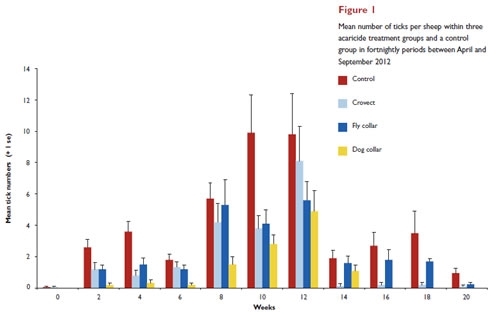 This blog was originally published in 2014.
This blog was originally published in 2014.
Sheep need to be treated for ticks and this is usually done by applying acaricide pour-on at regular intervals between April and October when ticks are looking for a blood meal.
The best acaricide is only effective for 8-12 weeks meaning sheep need to be treated 5 times. This is obviously costly and time consuming so we began looking at alternative treatment techniques.
We conducted an experiment in 2012 within a tick-infested rough grazing paddock on Rosedale Estate in the North York Moors using 66 sheep, divided into four groups:
- Fitted with a pendant made from cattle fly tags incorporating 935 milligrammes of cypermethrin and attached to plastic neck collars for sheep.
- Fitted with a commercial tick collar for large dogs, which contained one gramme of deltamethrin.
- Treated with Crovect, a conventional pour-on, containing 1.25% w/v cypermethrin, at an application rate of 10 millilitres per 20 kilogrammes live weight of sheep. Sheep were re-treated with Crovect after measuring tick burdens in week 12.
- A control group with no acaricide treatment.
The Outcome
The graph below shows how tick numbers responded to each of the four treatments. As you can see, after week 14 no ticks were found on those wearing dog collars, unlike those in the other three treatment groups. After week 2 the dog collar had a kill-rate of 93% compared with the control group.
This data has given us reasonable confidence in the effectiveness of dog collars and their ability to stay effective from April to October.

 Free weekly newsletter
Free weekly newsletter
Get all the latest GWCT blog updates and news delivered straight to your inbox each Tuesday.
Sign up FREE to the Weekly GWCT Newsletter >